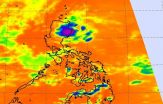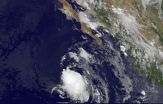Teens with medical marijuana cards much likelier to say they're addicted
2015-07-23
(Press-News.org) ANN ARBOR--A new University of Michigan study finds that teens using marijuana for medical reasons are 10 times more likely to say they are hooked on marijuana than youth who get marijuana illegally.
The study is the first to report on a nationally representative sample of 4,394 high school seniors and their legal or illegal medical marijuana use as it relates to other drug use. In the study, 48 teens had medical marijuana cards, but 266 teens used medical marijuana without a card.
Carol Boyd, the study's lead author and professor at the U-M School of Nursing, said she doesn't believe that medical marijuana use is necessarily creating teen addiction to marijuana, especially considering how few teens hold medical marijuana cards. She said it makes more sense that teens who feel dependent on the drug will seek marijuana cards to ensure a reliable, legal source.
Researchers looked at three types of marijuana users: medical users; those who used another's medical marijuana; and those who acquired marijuana from nonmedical sources such as street dealers. For each group researchers analyzed five risk behaviors connected to marijuana and other drug use.
Teens who used other's medical marijuana were at highest risk for engaging in all five risky behaviors, including using marijuana more frequently to get high and using alcohol and prescription pills. However, they were just four times as likely to say they're hooked on marijuana, as opposed to 10 times as likely for medical marijuana users.
Users who got marijuana from nonmedical sources, such as street dealers, were the largest group, but they had the lowest likelihood of engaging in the risky behaviors.
Boyd said the data illuminate shortcomings in medical marijuana policy.
"I think that medical marijuana laws are failed policy and that these data lend support to my position," Boyd said. "More youth use medical marijuana that don't have a card than that have a card."
According to the U-M C.S. Mott Children's Hospital National Poll on Children's Health, 4 in 5 people say adults should not be allowed to use medical marijuana in front of children.
The study, "Adolescents' use of Medical Marijuana: A Secondary Analysis of Monitoring the Future Data," is online now and is scheduled for publication in August in the Journal of Adolescent Health. The study used data from the 2012 and 2013 Monitoring the Future study, an ongoing study conducted at U-M's Institute for Social Research.
Boyd also has appointments at the U-M Addiction Research Center and the Institute for Research on Women and Gender.
INFORMATION:
ELSE PRESS RELEASES FROM THIS DATE:
2015-07-23
MADISON, Wis. -- University of Wisconsin-Madison engineers have developed a new approach to structuring the catalysts used in essential reactions in the chemical and energy fields. The advance offers a pathway for industries to wean themselves off of platinum, one of the scarcest metals in the earth's crust.
In an effort to reduce the catalysis world's dependence on this highly reactive and versatile -- but also quite expensive -- metal, UW-Madison chemical engineering Professor Manos Mavrikakis and his collaborators have turned to the nanoscale structure of particles, ...
2015-07-23
MADISON, Wis. -- If you have two working eyes, you are live streaming two images of the world into your brain. Your brain combines the two to produce a view of the world that appears as though you had a single eye -- like the Cyclops from Greek mythology.
And that's a good thing, as the combination of the two images makes for a much more useful impression of the world. With one eye shut, catching a ball or parking a car become far more difficult.
"If you're reaching out with your hand, you want to aim not at where things appear to be, but where they are," says Bas Rokers, ...
2015-07-23
Everybody grieves the death of a loved one, and the process helps most mourners adjust to their loss.
"Charlie Brown was right," said Christopher Layne, a psychologist and researcher at the Semel Institute for Neuroscience and Human Behavior at UCLA. "There is good grief."
But for some people, bereavement becomes a problem in itself, prolonging suffering and impairing functioning. For grieving children and adolescents persistent complex bereavement disorder can derail social and academic development at a time when children and adolescents need to master skills and form ...
2015-07-23
PULLMAN, Wash.--Washington State University scientists have found that glyphosate, the main ingredient in the herbicide Roundup, does not accumulate in mother's breast milk.
Michelle McGuire, an associate professor in the WSU School of Biological Sciences, is the lead researcher of the study, the first to have its results independently verified by an accredited, outside organization.
Her findings, presented at the Federation of American Societies for Experimental Biology Conference on July 23 in Big Sky, Mont., show that glyphosate, the most used weed-killing chemical ...
2015-07-23
Sometimes consumers might appreciate a pop-up ad that reflects the merchandise they were recently browsing online, and sometimes they just might decide to spike it and thereafter avoid the seller that placed the ad. Retailers can learn about this behavior in the September 2015 issue of the Journal of Retailing.
In "The Importance of Trust for Personalized Online Advertising," Marketing Professors Alexander Bleier, of Boston College's Carroll School of Management, and Maik Eisenbeiss, of the University of Bremen, show how trust in a particular vendor affects the degree ...
2015-07-23
When Tropical Depression 12W formed on the northeastern tip of the Philippines in the Luzon Region, NASA's Aqua satellite captured infrared data on the newborn storm.
The Atmospheric Infrared Sounder (AIRS) instrument that flies aboard NASA's Aqua satellite captured infrared data on Tropical Depression 12W. AIRS data showed some cloud top temperatures were as cold as -63F/-53C on July 23 at 5:17 UTC (1:17 a.m. EDT). Cloud top temperatures that cold have been shown to generate heavy rainfall.
Tropical Depression 12W (TD12W) formed at 0900 UTC (5 a.m. EDT) on July 23 ...
2015-07-23
Fairfax, Va., July 22, 2015 - The American Society for Radiation Oncology (ASTRO) is concerned about proposed additional payment cuts to radiation therapy detailed in the Centers for Medicare and Medicaid Services' (CMS) proposed Medicare Physician Fee Schedule (MPFS), released July 8, 2015, which will take effect on January 1, 2016. Freestanding centers estimate that the combined impact of the Medicare proposals would result in a five to seven percent reduction in payment for radiation oncology services at community-based centers, although the cuts will vary and could ...
2015-07-23
Tropical Storm Felicia was born early on July 23 in the Eastern Pacific Ocean, over 400 miles southwest of Baja California's southern tip. NOAA's GOES-West satellite provided an infrared image of the newborn storm.
Previously known as tropical low pressure area "System 99E," the storm finally developed after days of remaining unorganized. NOAA's GOES-West satellite captured an image of Tropical Storm Felicia on July 23, 2015 at 15:45 UTC (11:45 a.m. EDT). Satellite imagery shows that a curved band of thunderstorms are wrapping around the southern quadrant of the storm.
The ...
2015-07-23
Researchers in the Division of Hematology, Oncology and Blood & Marrow Transplantation at Children's Hospital Los Angeles have shown greatly improved outcomes in using stem cell transplantation to treat patients with a serious but very rare form of chronic blood cancer called juvenile myelomonocytic leukemia (JMML).
Allogeneic hematopoietic stem cell transplantation (HSCT) involves the transplantation of stem cells from a donor, which may be derived from bone marrow, peripheral blood or umbilical cord blood. The recipient's immune system is usually destroyed with radiation ...
2015-07-23
Researchers from Scripps Institution of Oceanography at UC San Diego have accurately mapped out the movement of the devastating 7.8-magnitude Nepal earthquake that killed over 9,000 and injured over 23,000 people. Scientists have determined that the earthquake was a rupture consisting of three different stages. The study could help a rapidly growing region understand its future seismic risks.
The Himalayan region is particularly prone to earthquakes and this study will serve as an important benchmark for understanding where future earthquakes may occur, especially ...
LAST 30 PRESS RELEASES:
[Press-News.org] Teens with medical marijuana cards much likelier to say they're addicted

